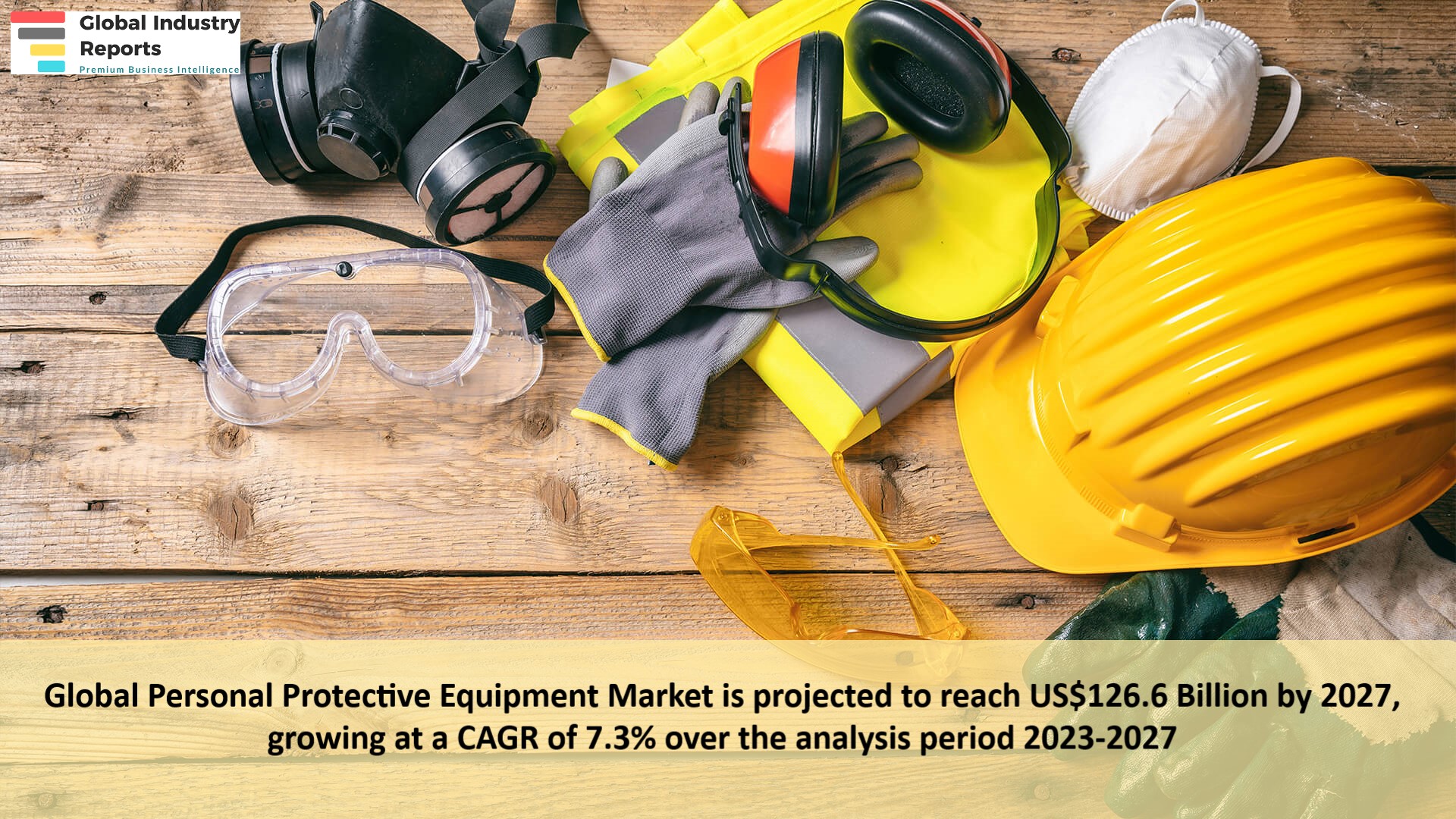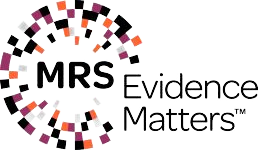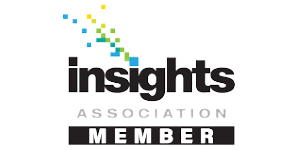Report Overview
- Understand the latest market trends and future growth opportunities for the Personal Protective Equipment industry globally with research from the Global Industry Reports team of in-country analysts – experts by industry and geographic specialization.
- Key trends are clearly and succinctly summarized alongside the most current research data available. Understand and assess competitive threats and plan corporate strategy with our qualitative analysis, insight, and confident growth projections.
- The report will cover the overall analysis and insights in relation to the size and growth rate of the “Personal Protective Equipment Market” by various segments at a global and regional level for the 2010-2027 period, with 2010-2021 as historical data, 2022 as a base year, 2023 as an estimated year and 2023-2027 as forecast period.
Description:
- The global market for Personal Protective Equipment estimated at US$89.4 Billion in the year 2022, is projected to reach a revised size of US$126.6 Billion by 2027, growing at a CAGR of 7.3% over the analysis period.
- Respiratory Protection, one of the segments analyzed in the report, is projected to record a 19.2% CAGR and reach US$12.6 Billion by the end of the analysis period. Growth in the Hand Protection segment is readjusted to a revised 16% CAGR for the next 7-year period.
- The Healthcare Personal Protective Equipment market in the U.S. is estimated at US$5.2 Billion in the year 2022.
- China, the world`s second largest economy, is forecast to reach a projected market size of US$5.5 Billion by the year 2027 trailing a CAGR of 20.9% over the analysis period. Among the other noteworthy geographic markets are Japan and Canada, each forecast to grow at 12% and 14.9% respectively over the analysis period. Within Europe, Germany is forecast to grow at approximately 13.8% CAGR.
- In the global Protective Clothing segment, USA, Canada, Japan, China and Europe will drive the 11.1% CAGR estimated for this segment. These regional markets accounting for a combined market size of US$1.5 Billion in the year 2020 will reach a projected size of US$3.2 Billion by the close of the analysis period. China will remain among the fastest growing in this cluster of regional markets.
MARKET DATA INCLUDED
- Unit Sales, Average Selling Prices, Market Size & Growth Trends
- COVID-19 Impact and Global Recession Analysis
- Analysis of US inflation reduction act 2022
- Global competitiveness and key competitor percentage market shares
- Market presence across multiple geographies – Strong/Active/Niche/Trivial
- Online interactive peer-to-peer collaborative bespoke updates
- Market Drivers & Limiters
- Market Forecasts Until 2027, and Historical Data to 2015
- Recent Mergers & Acquisitions
- Company Profiles and Product Portfolios
- Leading Competitors
The Report Includes:
- The report provides a deep dive into details of the industry including definitions, classifications, and industry chain structure.
- Analysis of key supply-side and demand trends.
- Detailed segmentation of international and local products.
- Historic volume and value sizes, company, and brand market shares.
- Five-year forecasts of market trends and market growth.
- Robust and transparent research methodology conducted in-country.
- Qualitative and quantitative analysis of the market based on segmentation involving both economic as well as non-economic factors.
- Provision of market value (USD Billion) data for each segment and sub-segment.
- Analysis by geography, region, Country, and its states.
- A brief overview of the commercial potential of products, technologies, and applications.
- Company profiles of leading market participants dealing in products category.
- Description of properties and manufacturing processes.
- marketed segments on the basis of type, application, end users, region, and others.
- Discussion of the current state, setbacks, innovations, and future needs of the market.
- Examination of the market by application and by product sizes; utility-scale, medium scale and small-scale.
- Country-specific data and analysis for the United States, Russia, China, Germany, United Kingdom, France, Japan, Israel, Saudi Arabia, South Korea, United Arab Emirates, Canada, Switzerland, Australia, India, Italy, Turkey, Qatar, Sweden, Spain, Belgium, Netherlands, Norway, Singapore, Egypt, Denmark, Austria, Vietnam, Brazil, Argentina, Mexico, South Africa, and others.
- Coverage of historical overview, key industrial development and regulatory framework.
- Analysis of competitive developments, such as contracts & agreements, expansions, new product developments, and mergers & acquisitions in the market.
- A look at the opportunities in the market for stakeholders and provide a competitive landscape of the market leaders.
Reports Scope and Segments:
| Report Attribute | Details |
| Market size in 2022 | US$89.4 Billion |
| Market size forecast in 2027 | US$126.6 Billion |
| Growth Rate | CAGR of 7.3% from 2022 to 2027 |
| Base year for estimation | 2022 |
| Historical data | 2015 – 2022 |
| Forecast period | 2023 – 2027 |
| Quantitative units | Revenue in USD million and CAGR from 2023 to 2027 |
| Report coverage | Revenue forecast, company ranking, competitive landscape, growth factors, trends, DROT Analysis, Market Dynamics and Challenges, and Strategic Growth Initiatives
COVID-19 Impact, Market Growth Trends, Market Limiters, Competitive Analysis & SWOT for Top Competitors, Mergers & Acquisitions, Company Profiles, Product Portfolios Market Size, Market Shares, Market Forecasts, Market Growth Rates, Units Sold, and Average Selling Prices. |
| Segments covered | Technology, Equipment Type, Product, Application and Region |
| Regional scope | North America; Europe; Asia Pacific; Latin America; Middle East and Africa and rest of the world |
| Country scope | United States, Russia, China, Germany, United Kingdom, France, Japan, Israel, Saudi Arabia, South Korea, United Arab Emirates, Canada, Switzerland, Australia, India, Italy, Turkey, Qatar, Sweden, Spain, Belgium, Netherlands, Norway, Singapore, Egypt, Denmark, Austria, Vietnam, Brazil, Argentina, Mexico, South Africa, and others. |
| Key companies profiled | 3M; Alpha Pro Tech Ltd.; Ansell Protective Solutions AB; Avon Rubber Plc; BartelsRieger Atemschutztechnik GmbH; Berkina NV; Cardinal Health, Inc.; COFRA Holding AG; Delta Plus Group; DowDuPont; Draegerwerk AG & Co. KGaA; DuPont De Nemours, Inc.; E D Bullard Company; Eurodress GmbH; FallTech; Gateway Safety, Inc.; Golden Chang; Grolls; Hartalega Holdings Bhd; Honeywell International, Inc.; Interspiro AB; JAL Group; Jallatte Group; Johnson Controls; JSP Ltd.; Kimberly-Clark Corp.; Lakeland Industries Inc.; Lakeland Industries, Inc.; Lindstrom Group; Louis M. Gerson Co.; Mallcom; MCR Safety; Mine Safety Appliances (MSA) Company; Moldex; MSA Safety Inc.; Oftenrich Holdings Co. Ltd.; Polison Corp.; Radians, Inc.; Rahman Group; Rock Fall (UK) Ltd.; Scott Safety; Sioen Industries NV; Supermax Corporation Berhad; Top Glove Corporation Bhd; Uvex Group; Wells Lamont Industry Group; Z and V Group and others. |
| Customization scope | Free report customization (equivalent up to 20 analyst’s working days) with purchase. Addition or alteration to country, regional & segment scope. |
| Report Format | PDF, PPT, Excel & Online User Account |
Report Segmented by:
By Type:
- Hand & Arm Protection
- Disposable gloves
- Reusable gloves
- Others (wrist cuffs & armlets, elbow protectors, mitts, barrier creams)
- Protective Clothing
- Disposable protective clothing
- Reusable protective clothing
- Foot & Leg Protection
- Respiratory Protection
- Disposable face masks
- Reusable face masks
- Others (Breathing apparatus, air purifying respirators, supplied air
- respirators)
- Eye & Face Protection
- Head Protection
- Others
By End-use industry:
- Manufacturing
- Construction
- Oil & Gas
- Healthcare
- Transportation
- Firefighting
- Food
- Others
By Region:
- North America
- Europe
- Asia Pacific
- Latin America
- Middle East & Africa
- Rest Of The World
Key Companies Covered in Report:
(Refer sample report for Complete List of companies covered in report):
| 3M | JSP Ltd. |
| Alpha Pro Tech Ltd. | Kimberly-Clark Corp. |
| Ansell Protective Solutions AB | Lakeland Industries Inc. |
| Avon Rubber Plc | Lakeland Industries, Inc. |
| BartelsRieger Atemschutztechnik GmbH | Lindstrom Group |
| Berkina NV | Louis M. Gerson Co. |
| Cardinal Health, Inc. | Mallcom |
| COFRA Holding AG | MCR Safety |
| Delta Plus Group | Mine Safety Appliances (MSA) Company |
| DowDuPont | Moldex |
| Draegerwerk AG & Co. KGaA | MSA Safety Inc. |
| DuPont De Nemours, Inc. | Oftenrich Holdings Co. Ltd. |
| E D Bullard Company | Polison Corp. |
| Eurodress GmbH | Radians, Inc. |
| FallTech | Rahman Group |
| Gateway Safety, Inc. | Rock Fall (UK) Ltd. |
| Golden Chang | Scott Safety |
| Grolls | Sioen Industries NV |
| Hartalega Holdings Bhd | Supermax Corporation Berhad |
| Honeywell International, Inc. | Top Glove Corporation Bhd |
| Interspiro AB | Uvex Group |
| JAL Group | Wells Lamont Industry Group |
| Jallatte Group | Z and V Group. |
| Johnson Controls | Others |
After Sales Support
- Every updated edition of the report and full data stack will be provided at no extra cost for 24 months.
- Latest 2022 base year report.
- Free Updated edition of 2023 every quarter without any hidden cost.
- No user limitation for the report. Unlimited access within the organization.
- Unrestricted post-sales support at no additional cost
- Free report customization (equivalent up to 10 analyst’s working days) with purchase. Addition or alteration to country, regional & segment scope
- Global Industry Reports will support your post-purchase for a period of 24 months to answer any of your queries related to the following market and to provide you any more data needed, for your analysis.
- Option to purchase regional or selected Chapters from the report.
Key Questions Answered in this Report
- How will the Personal Protective Equipment market evolve?
- Who are the key players in Personal Protective Equipment market? What are their strategies?
- What is the competitive landscape?
- What are the needs, challenges, and solutions in Personal Protective Equipment market?
- What’s the value chain for Personal Protective Equipment s?
- What’s the forecast for Personal Protective Equipment market adoption in the next decade?
- What are the drivers for adoption of Personal Protective Equipment ?
- What’s the right price? The right timing?
- Will this market happen at all? How big can it get?










